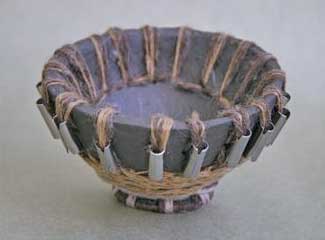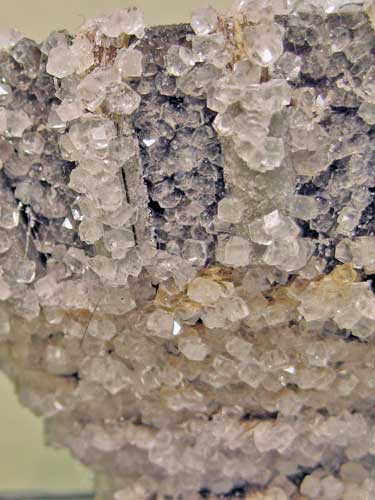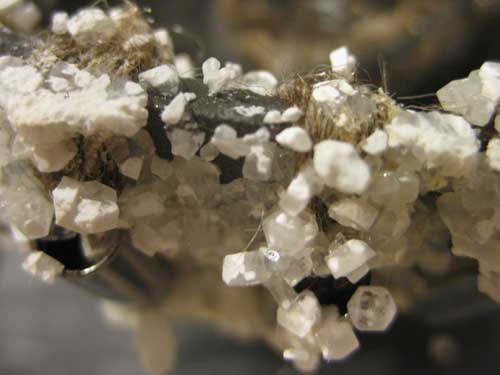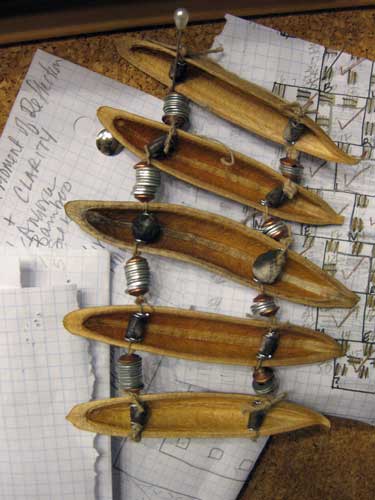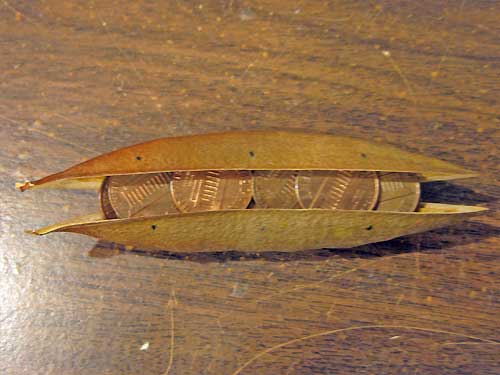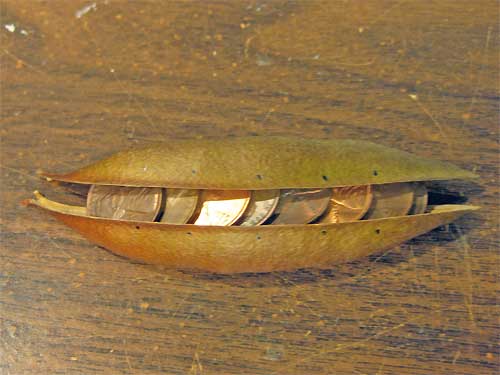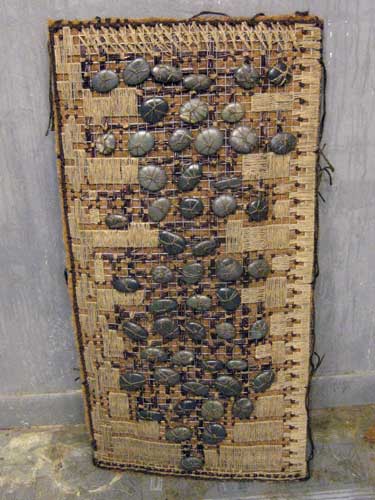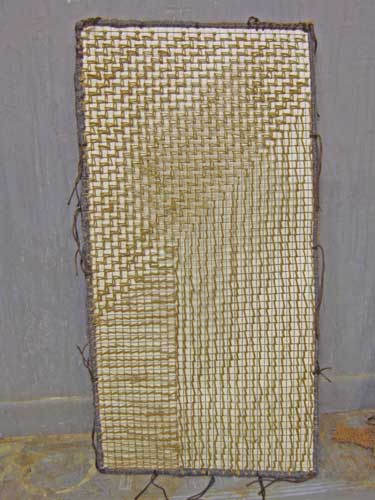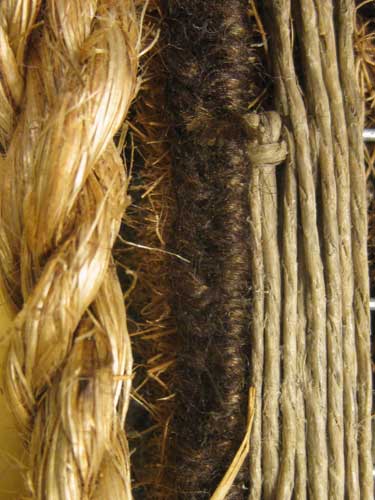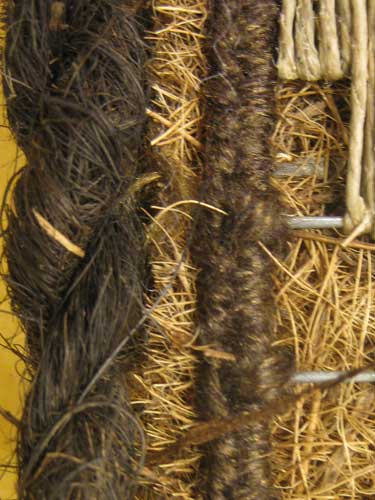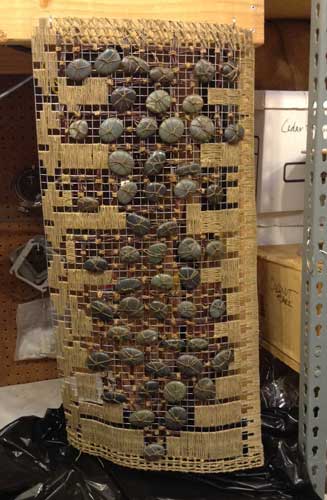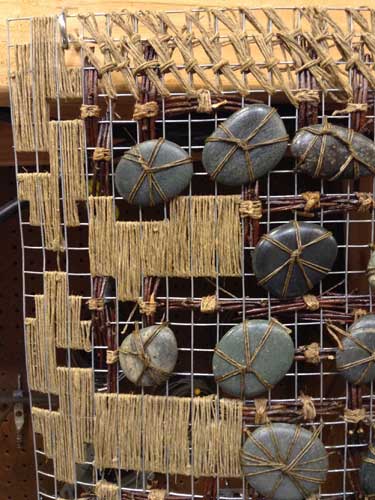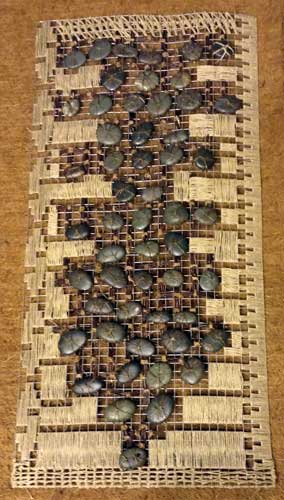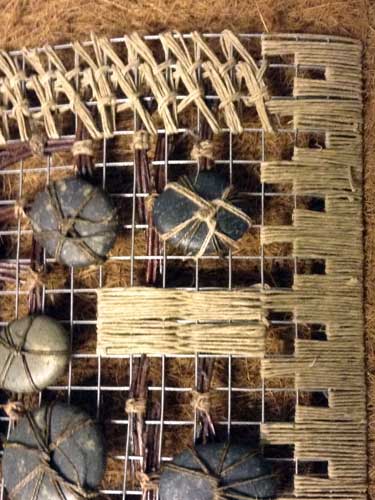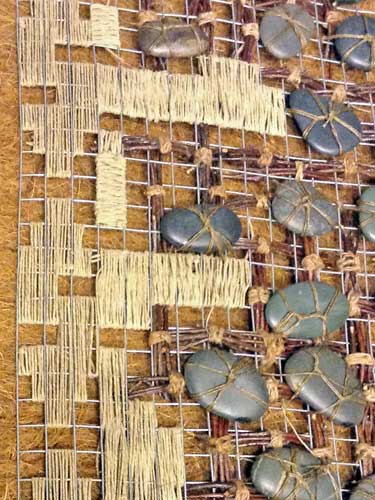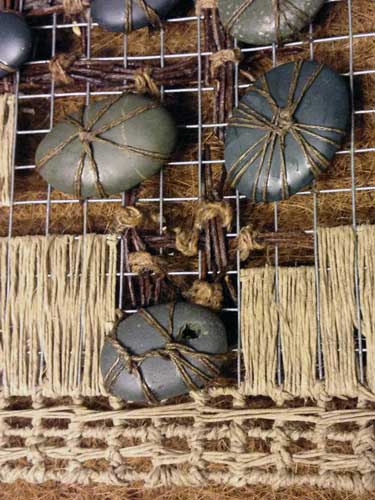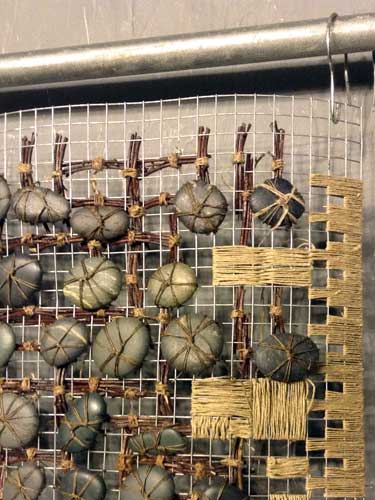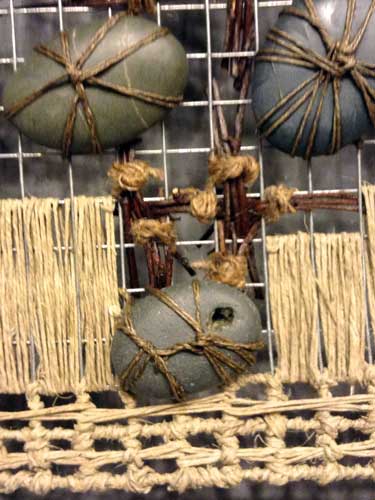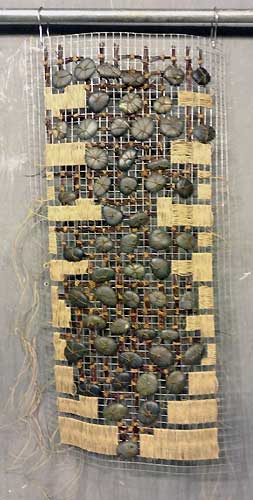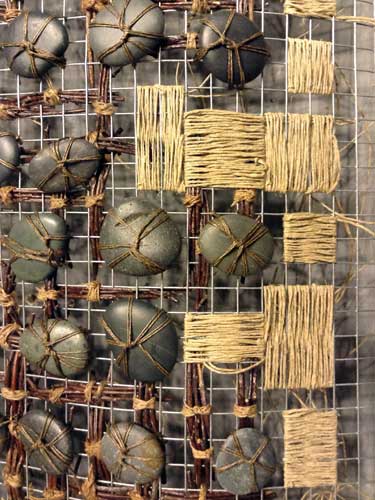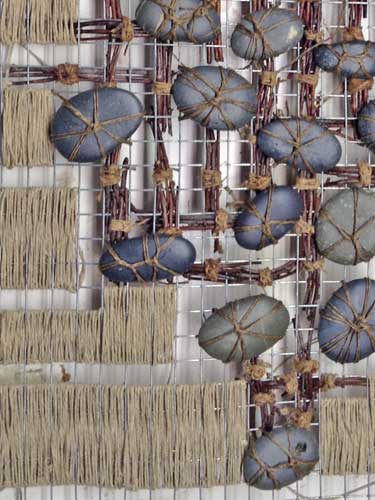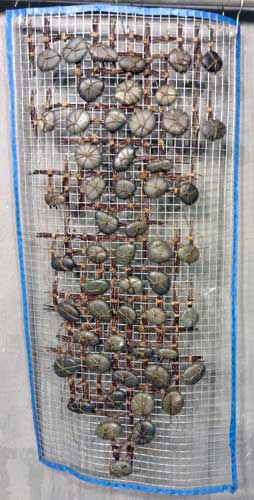I attempted to use concrete several times over the past 20 years. While some results were promising, I wasn’t ready to commit time to figure out why problems occurred.
I am currently working on a series of pod pieces. The pieces are constructed of actual woody pods. The contents removed and replaced with coins or metal bits woven into fulled wool, with hinges and bindings added.
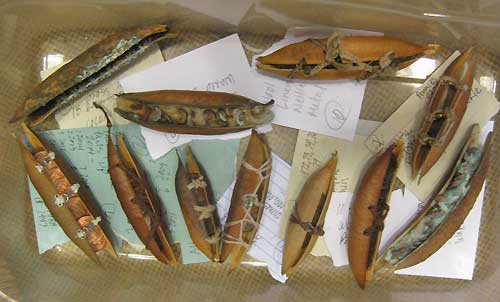
Yep, they are in a plastic box. Ever since casemaking moths came to live in my studio, everything they might like to eat is stored in plastic or glass.
The plan was to make cedar boxes for the pods. And then a fun thing happened. I was rearranging some things in my studio and found some concrete cups and tiles from my last concrete casting attempt.
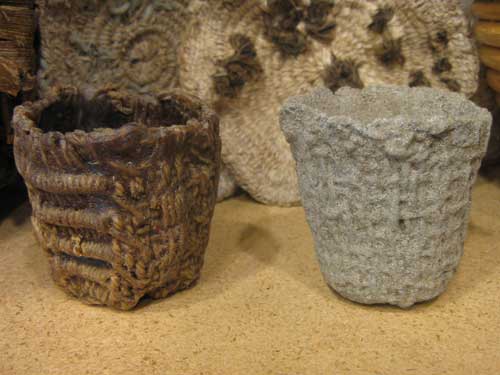
The concrete cup on the right was cast in a silicone mold.
The mold was made of a waxed woven cup similar to the on the left.
Immediately I started thinking about making concrete boxes for my pods. But how? Concrete box with wood lids? Concrete with bamboo support? Concrete with inlaid copper? Concrete with metal mesh and code?
I googled concrete and found loads of stuff on using ready mixed concrete to make functional objects and tons of stuff on hypertufa.
Then I found Andrew Goss. He has a website with lots of great information for using concrete to make art pieces.
After reading the information on his site, I realized that I had attempted to cast thin walls without compensating for the removal of aggregate. Adding latex wasn’t enough especially when I was not caring properly for the pieces. I did not know the importance of wrapping the pieces in plastic. Why, I don’t know. My background is in clay and I definitely know how to care for clay during forming and drying.
I selected four concrete and hypertufa mixes for my first test–
| Materials | Mix 1 | Mix 2 | Mix 3 | Mix 4 |
|---|---|---|---|---|
| Concrete | 1 | 1 | 1 | 1 |
| Vermiculite | 4 | 1.5 | 1 | |
| Peat Moss | 1.5 | 1 | ||
| Sand | 1 | 3 |
I added very little water so that I could press the concrete into silicone cup molds. I wrapped the concrete-filled molds in plastic. After two days I removed the pieces from the molds, leveled the bottoms of the cups, then wrapped them in plastic. Every day I have given the concrete cups a dip in water, then rewrapped them in plastic, and popped them in yogurt cups. I do think that a thinner plastic would be better.

The main objective is to find a concrete mix that when cured will live nicely with my pod pieces. I like the texture that results from using peat in a hypertufa mix, but I do not like the bits flitting about in the air when it is sifted. Wearing a respirator does not keep the peat dust from collecting all over the studio. Also, I really dislike the way it smells in the wet mix and every time I unwrap the test pieces.
Since I want to make a success of concrete this time, I thought it would be a good idea to use good and tested information. I purchased Andrew’s book, Concrete Handbook for Artists, Technical Notes for Small-Scale Objects. I wish that I had found the book the first time I attempted concrete.
Andrew Goss’ blog, Art Concrete.
Elder Jones’ blog, Sandpudding Studio. Wet Carved Concrete
John Annesley’s blog, Sustainable Buildings as Art. Burlap-crete

